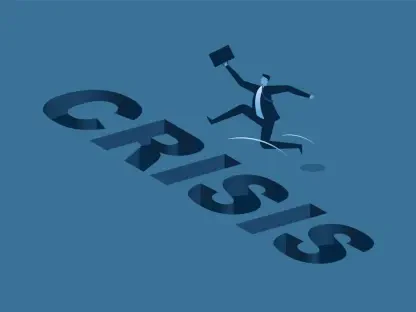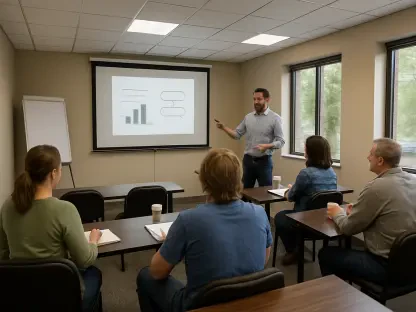The landscape of higher education in the United States is poised for significant changes in 2025, driven by a series of pivotal lawsuits. These legal battles encompass a range of issues, from immigration policies to antitrust allegations, and their outcomes could reshape the policies and practices of educational institutions nationwide. This article delves into the key lawsuits to watch, exploring their potential impacts and the broader trends they reflect. The legal uncertainty, shifting regulations, and evolving institutional practices create a dynamic environment for students, administrators, and policymakers alike.
DACA’s Indeterminate Future
The Deferred Action for Childhood Arrivals (DACA) program, established in 2012, has been a focal point of legal contention for over a decade. Despite a 2020 Supreme Court ruling that blocked the Trump administration’s attempt to terminate the program, DACA remains in a state of legal uncertainty. Recent appellate court decisions have declared the program illegal but allowed it to continue for current beneficiaries. This limbo status creates anxiety for undocumented immigrants who depend on DACA for protection against deportation and work authorization in the United States.
In 2022, the Biden administration issued a comprehensive regulation to solidify DACA’s legality, consisting of 453 pages aiming to fortify the program’s framework. However, a Texas court ruled these new regulations unlawful, maintaining the program’s operational status but leaving its future hanging by a thread. The Supreme Court’s forthcoming decisions and the policy direction of the Trump administration will be crucial in determining DACA’s fate. As President Trump has indicated a potential shift from his previous stance by expressing a desire to protect undocumented immigrants under DACA, the evolving position adds another layer of complexity to the program’s legal battles.
The persistent legal challenges facing DACA underscore the broader issues surrounding immigration policy in the United States. Advocates and critics alike recognize the profound impact that these decisions will have on individuals and communities nationwide. The uncertainty surrounding the program has significant implications, not only for current beneficiaries but also for the broader immigration landscape. The ultimate outcome of these legal battles may set a precedent for future immigration policies, highlighting the need for a more comprehensive and stable solution.
Revising Borrower Defense Approaches
The borrower defense program, which allows students deceived or defrauded by their colleges to have their loans forgiven, has undergone significant regulatory changes under different administrations. The Biden administration’s new borrower defense regulations aim to ease the process for student debt relief but face legal challenges that could hinder their implementation. The Trump administration has requested the Supreme Court to delay consideration of the case while reviewing the U.S. Department of Education’s regulations anew, suggesting a possible reassessment and revision of borrower defense rules.
These regulatory oscillations reflect broader tensions between protecting student interests and imposing accountability measures on educational institutions. The borrower defense program has long been a contentious issue, with differing views on the extent of debt relief that should be provided to students who have been misled by their colleges. The outcome of these legal challenges will have significant implications for the ease and scope of potential debt relief for students seeking justice for their financial burdens.
The conflicting approaches of the Biden and Trump administrations to borrower defense underscore the dynamic nature of higher education policy in the United States. As educational institutions navigate these regulatory changes, students and advocates continue to push for protections and relief from fraudulent practices. The evolving legal landscape presents an opportunity for stakeholders to reassess the balance between student protection and institutional accountability, paving the way for more robust and equitable policies in the future.
Antitrust Allegations Against Academic Publishers
In a striking development, UCLA neuroscience professor Lucina Uddin filed a lawsuit in September against six major academic publishers, accusing them of operating a cartel that violates antitrust law. The publishers named in the suit are Elsevier, Wolters Kluwer, Wiley, Sage Publications, Taylor & Francis, and Springer Nature. The lawsuit alleges three main anti-competitive practices: fixing peer reviewer compensation at zero dollars, enforcing the “single submission rule,” and restricting public discussion of submissions under review.
These practices, the suit argues, form a cartel that slows scientific advancements and violates the Sherman Antitrust Act. Defendants, including Wiley, have dismissed these allegations as meritless and intend to seek case dismissal. However, this legal challenge remains in its early stages and could have substantial implications for the academic publishing landscape. The outcome of this lawsuit has the potential to reshape the dynamics of scholarly publishing, addressing long-standing concerns about transparency, fairness, and accessibility in the dissemination of scientific knowledge.
The antitrust allegations against academic publishers highlight significant ethical and legal questions about their practices, potentially affecting the broader academic community. If the lawsuit succeeds, it could pave the way for reforms that promote greater competition, innovation, and collaboration in scientific publishing. This case underscores the importance of maintaining integrity and fairness in academic research, ensuring that the pursuit of knowledge remains free from undue influence and monopolistic practices.
Contentious Gainful Employment Regulations
The Biden administration’s gainful employment regulations, released in 2023, mandate career programs to prove that graduates can earn enough to repay their loans and outearn high school graduates without postsecondary degrees. The Department of Education projects that this rule could protect about 700,000 students from enrolling in low-performing programs that leave them with unsustainable debt and poor job prospects. These regulations aim to hold educational institutions accountable for the financial outcomes of their graduates, promoting transparency and consumer protection.
The American Association of Cosmetology Schools (AACS) has legally contested this regulation, arguing that it is arbitrary and that the debt-to-earnings ratio metric fails to fully capture the income of tipped workers. Judicial interpretations of the “Chevron doctrine,” which dictates the extent of judicial deference to administrative agency interpretations, could influence the enforcement of these regulations. Recent Supreme Court decisions have moved interpretation power from government agencies to the courts, potentially impacting how gainful employment measures are upheld.
The legal challenges to gainful employment regulations reflect broader debates about the role of government oversight in higher education. Proponents argue that these measures are necessary to protect students from predatory programs that exploit their ambitions without delivering meaningful economic benefits. Critics contend that the regulations are overly burdensome and fail to account for the complexities of different career pathways. As the courts weigh in on these issues, the future of gainful employment regulations remains uncertain, with significant implications for students, institutions, and policymakers alike.
FTC’s Battle with Grand Canyon Education
The Federal Trade Commission’s 2023 lawsuit against Grand Canyon University and Grand Canyon Education (GCE) challenges the separation between the university and its education company arm. Although reorganized as a nonprofit entity, GCU reportedly continues to operate to the benefit of GCE’s investors. The FTC accuses the university of deceptively advertising itself as a nonprofit, making millions of abusive telemarketing calls, and misleading marketing about the timelines for completing “accelerated” doctoral programs.
While a judge dismissed the claims against GCU, the FTC continues to pursue the case against GCE. Separately, a federal court victory for GCU asserted that the Education Department applied an incorrect legal standard in treating it as a for-profit entity for federal aid purposes. This legal precedent could influence ongoing disputes and the classification of educational organizations, raising important questions about transparency, accountability, and the proper role of non-profit entities in the education sector.
The complexities surrounding the FTC’s lawsuit against Grand Canyon Education underscore the challenges in distinguishing between nonprofit educational enterprises and profit-driven entities. As the case unfolds, it will likely have broader implications for how educational organizations are classified and regulated. The outcome of this legal battle could set a precedent for future cases, shaping the landscape of higher education and ensuring that institutions operate with integrity and transparency.
Overarching Trends and Consensus Viewpoints
The landscape of higher education in the United States is expected to experience significant changes by 2025, largely due to a series of crucial lawsuits. These legal battles address a broad spectrum of issues, ranging from immigration policies to allegations of antitrust violations. The resolutions of these cases have the potential to reshape the policies and operational practices of educational institutions across the nation.
This article examines some key lawsuits, shedding light on their possible impacts and the larger trends they signify. For instance, lawsuits around immigration policies might affect the number of international students and the diversity within campuses. Meanwhile, antitrust lawsuits could challenge how colleges and universities set tuition and manage financial aid.
In addition to the lawsuits themselves, the article looks at the resulting legal uncertainty, which adds complexity to the higher education landscape. Shifting regulations could force institutions to adapt rapidly, creating a more dynamic and fluid environment. Administrators may need to rethink strategies, while students and policymakers navigate these changes. Ultimately, the evolving legal and regulatory landscape is set to create new challenges and opportunities for all involved in higher education.








